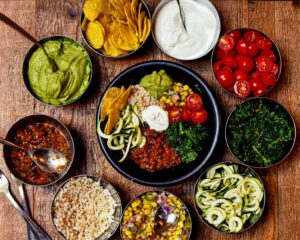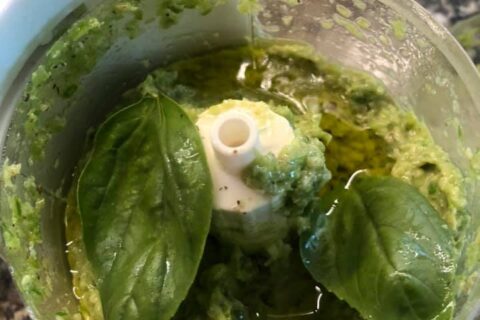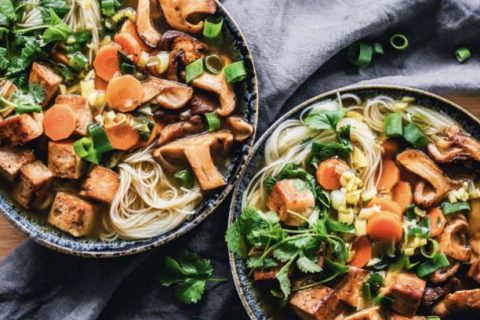What is the Blue Zones Diet?

“Blue Zone” is a non-scientific term given to geographic regions that are home to some of the world’s oldest people. It was first used by the author Dan Buettner, who was studying areas of the world in which people live exceptionally long lives. They are called Blue Zones because when Buettner and his colleagues were searching for these areas, they drew blue circles around them on a map. A number of studies have found that these areas contain extremely high rates of nonagenarians and centenarians, which are people who live over 90 and 100, respectively Interestingly, genetics probably only accounts for 20–30% of longevity. Therefore, environmental influences, including diet and lifestyle, play a huge role in determining your lifespan.
Diets in the Blue Zones are typically rich in the following:
- Vegetables: They’re a great source of fiber and many different vitamins and minerals. Eating more than five servings of fruits and vegetables a day can significantly reduce your risk of heart disease, cancer and death.
- Legumes: Legumes include beans, peas, lentils and chickpeas, and they are all rich in fiber and protein. A number of studies have shown that eating legumes is associated with lower mortality.
- Whole grains: Whole grains are also rich in fiber. A high intake of whole grains can reduce blood pressure and is associated with reduced colorectal cancer and death from heart disease.
- Nuts: Nuts are great sources of fiber, protein and polyunsaturated and monounsaturated fats. Combined with a healthy diet, they’re associated with reduced mortality and may even help reverse metabolic syndrome.
Throughout the world’s Blue Zones and their diets, people traditionally eat the whole food. They don’t throw the yolk away to make an egg-white omelet, or spin the fat out of their yogurt, or juice the fiber-rich pulp out of their fruits. They also don’t enrich or add extra ingredients to change the nutritional profile of their foods. They get everything they need from nutrient-dense, fiber-rich whole foods. And when they prepare dishes, those dishes typically contain a half dozen or so ingredients, simply blended together.
Almost all of the food consumed by centenarians in the Blue Zones diet—up to 90%—also grows within a ten-mile radius of their home. Food preparation is simple. They eat raw fruits and vegetables; they grind whole grains themselves and then cook them slowly. They use fermentation—an ancient way to make nutrients bio-available—in the tofu, sourdough bread, wine, and pickled vegetables they eat.
Eating only whole foods, people living in the Blue Zones rarely ingest any artificial preservatives. The foods they eat, especially the grains, are digested slowly, so blood sugar doesn’t spike. Nutritional scientists are only just beginning to understand how all the elements from the entire plant (rather than isolated nutrients) work together synergistically to bring forth ultimate health. There are likely many thousands of phytonutrients—naturally occurring nutritional components of plants—yet to be discovered.
How you can do it:
- Shop for foods at your local farmers markets or community-supported farms.
- Avoid factory-made foods.
- Avoid foods wrapped in plastic.
- Avoid food products made with more than five ingredients.
- Avoid pre-made or ready-to-eat meals.
- Try to eat at least three Super Blue Foods daily (listed below). You don’t have to eat copious amounts of these foods. But you will likely discover that these foods go far to boost your energy and sense of vitality, so you’ll be less likely to turn to the sugary, fatty, and processed stuff that gives you the immediate (and fast-fleeting) “fix.”
Eat Super Blue Foods
Integrate at least three of these items into your daily Blue Zones diet to be sure you are eating plenty of whole food.
- Beans—all kinds: black beans, pinto beans, garbanzo beans, black-eyed peas, lentils
- Greens—spinach, kale, chards, beet tops, fennel tops
- Sweet Potatoes – don’t confuse with yams
- Nuts – all kinds: almonds, peanuts, walnuts, sunflower seeds, Brazil nuts, cashews
- Olive oil—green, extra-virgin is usually the best. (Note that olive oil decomposes quickly, so buy no more than a month’s supply at a time.)
- Oats—slow-cooking or Irish steel-cut are best
- Barley—either in soups, as a hot cereal, or ground in bread
- Fruits – all kinds
- Green or herbal teas
- Turmeric – as a spice or tea
The above article is excerpted from “Everything you need to live a Blue Zones life in 2023” from www.bluezones.com, Newsletter, January 1, 2023.
*And of course, only choose organic. * Genetically modified foods and pesticides wreak havoc with your microbiome which supports and regulates your immune response and also your nervous system – thinking, cognition, mood including your emotional and mental health.
©January2023 Kalpana (Rose) M. Kumar M.D., CEO and Medical Director, The Ommani Center for Integrative Medicine, Pewaukee, WI. www.ommanicenter.com Author of Becoming Real: Reclaiming Your Health in Midlife (2nd Edition), Medial Press, 2014. Dr. Kumar is currently accepting new patients. Call 262.695.5311 for an appointment, either virtual or in-person for those free of symptoms.


